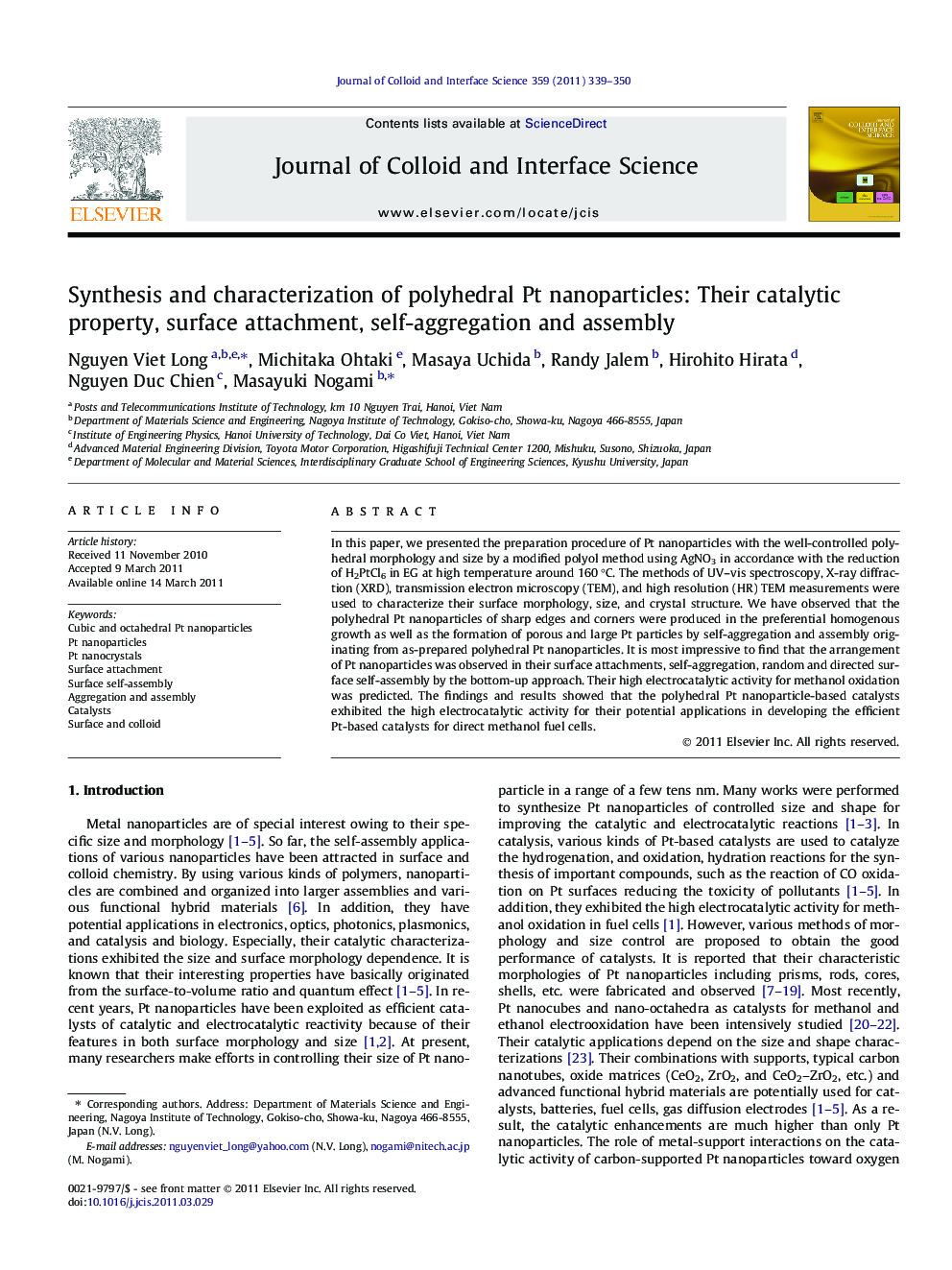| Article ID | Journal | Published Year | Pages | File Type |
|---|---|---|---|---|
| 608666 | Journal of Colloid and Interface Science | 2011 | 12 Pages |
In this paper, we presented the preparation procedure of Pt nanoparticles with the well-controlled polyhedral morphology and size by a modified polyol method using AgNO3 in accordance with the reduction of H2PtCl6 in EG at high temperature around 160 °C. The methods of UV–vis spectroscopy, X-ray diffraction (XRD), transmission electron microscopy (TEM), and high resolution (HR) TEM measurements were used to characterize their surface morphology, size, and crystal structure. We have observed that the polyhedral Pt nanoparticles of sharp edges and corners were produced in the preferential homogenous growth as well as the formation of porous and large Pt particles by self-aggregation and assembly originating from as-prepared polyhedral Pt nanoparticles. It is most impressive to find that the arrangement of Pt nanoparticles was observed in their surface attachments, self-aggregation, random and directed surface self-assembly by the bottom-up approach. Their high electrocatalytic activity for methanol oxidation was predicted. The findings and results showed that the polyhedral Pt nanoparticle-based catalysts exhibited the high electrocatalytic activity for their potential applications in developing the efficient Pt-based catalysts for direct methanol fuel cells.
Graphical abstractFigure shows the TEM and HRTEM images of polyhedral Pt nanoparticles synthesized by modified polyol method with the assistance of AgNO3. It is seen that the large and porous Pt particles are formed by surface attachments, aggregation, and assembly of as-prepared polyhedral Pt nanoparticles upon the removal of PVP polymer. Scale bars: (a–c) 2 nm; (b) 5 nm; (d–e) 20 nm.Figure optionsDownload full-size imageDownload high-quality image (212 K)Download as PowerPoint slideHighlights► Pt nanoparticles under size and polyhedral morphology control are synthesized by polyol method of adding AgNO3. ► The role of AgNO3 is important for the nucleation, overgrowth, and formation of the tetrahedral, cubic, and octahedral main morphologies of Pt nanoparticles. ► The surface attachment, random and directed aggregation, and assembly of polyhedral Pt nanoparticles in the formation of large, porous, polyhedral, and irregular Pt particles are explored without any assembly techniques. ► Interestingly, polyhedral Pt nanoparticle-based catalyst shows the high catalytic activity.
